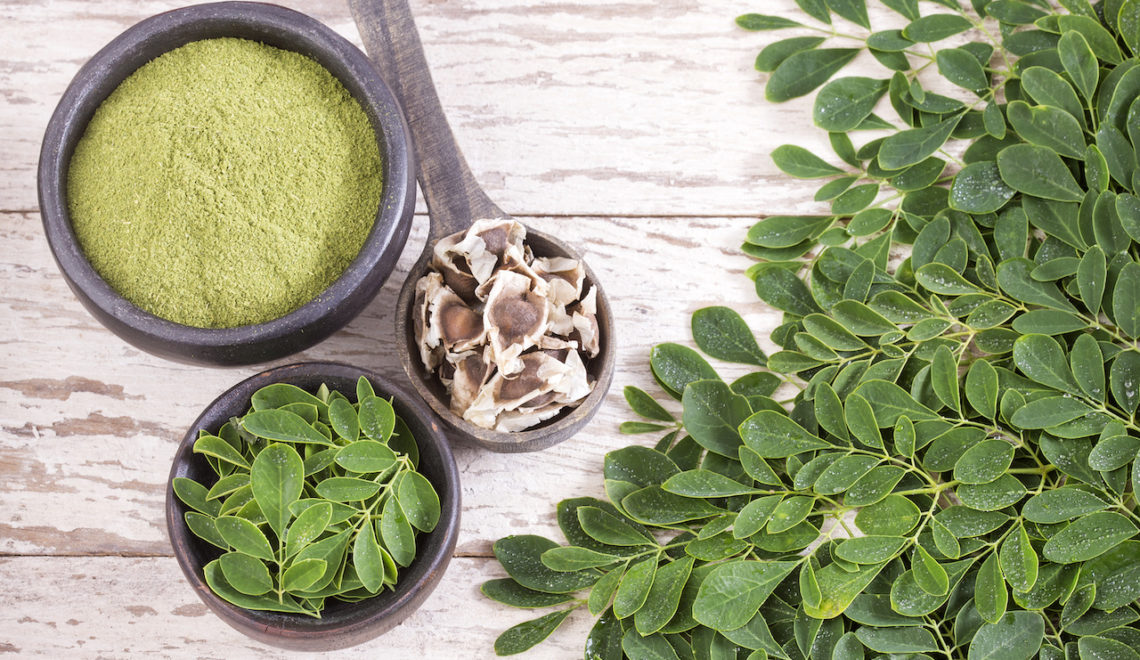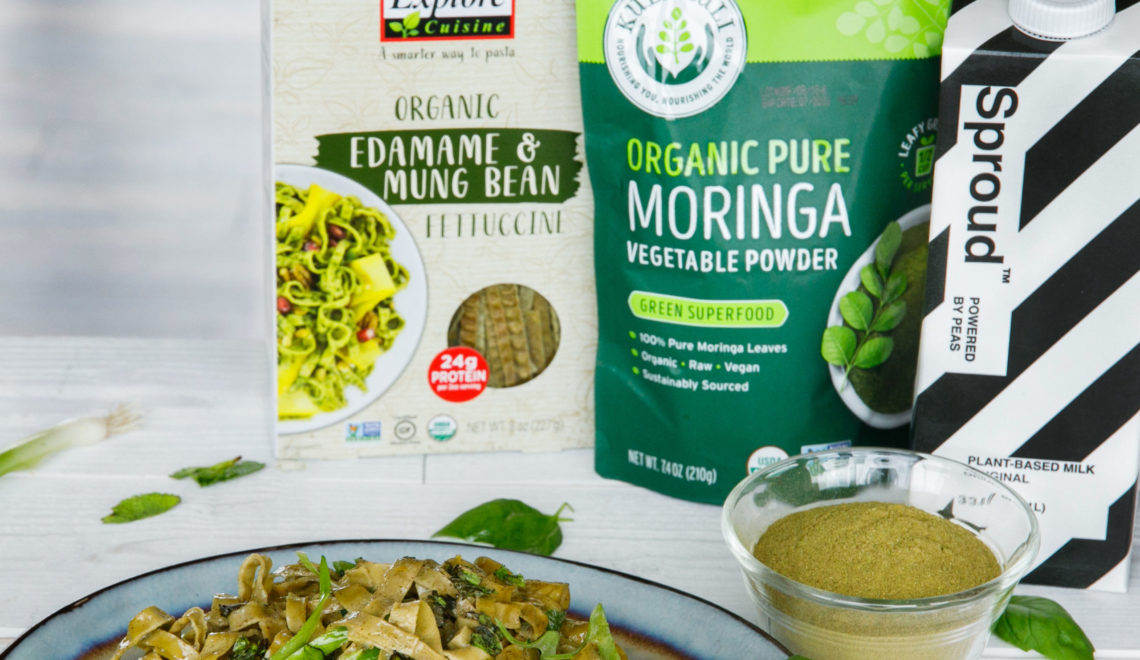Not all moringa is created equal. Kuli Kuli’s Pure Moringa is one of the most nutrient-dense green “superfoods” available. As more moringa brands emerge, how can you tell which moringa is the highest quality? Is it the organic certification, the green color or the spicy taste?
As more people rave about green superfood powders, here are a few tips for how you can use your senses to determine the quality of your moringa. Feel free to leave a comment or question below!
1. Know where your moringa comes from and how it is grown
To understand how “super” your super green really is, you have to understand how the plant is grown. Kuli Kuli prides itself on working directly with suppliers to ensure they have met Kuli Kuli’s specifications for protein, iron, potassium and calcium levels, and are free from lead and other harmful substances. While there continues to be more moringa available on the market, it is not easy to produce Kuli Kuli’s Pure Moringa.
Kuli Kuli works with its suppliers to ensure that the moringa tree is grown in the cleanest conditions and its leaves are processed to maintain nutritional integrity.
The three key aspects that are examined are:
1) plant soil quality
2) careful drying processing
3) certified product quality
The moringa tree is a powerful bioaccumulator, meaning it can absorb great levels of minerals and heavy metals from the soil, so unlike other brands, Kuli Kuli only sources its moringa from suppliers in remote areas that are free of pesticides and industrial pollutants.
2. Trust the brand and its certifications
As consumers care more and more about purchasing organic products, they must also be cautious about the brands they choose to trust. Kuli Kuli rigorously tests its moringa along each stage of sourcing to ensure that the moringa is of the highest nutritional integrity. These routine checks also validate every farmer’s organic certifications. Unfortunately as the organic movement grows stronger it also means that cheaters will enter the market.
In 2017, Kuli Kuli requested Midwest Labs, and accredited third-party research company, to conduct a full pesticide residue analysis of Kuli Kuli’s Pure Moringa and three leading competitors’ organic Moringa products. The results indicated Kuli Kuli’s Pure Moringa is free of any pesticide residues; however, all three “organic” competitor brands contained pesticide residues higher than permitted under the USDA’s organic program standards. Kuli Kuli has raised the bar on best practices for Moringa plant quality and processing while continuing to ensure all initiatives are backed by science.
All of our moringa products are inspected for microbiological inspection and heavy metals. Our quality assurance requires that our moringa is tested at least four times before meeting the shelves. Kuli Kuli sources only the highest-quality, sustainably-grown moringa leaves from our network of farmers across the globe.
It is important to purchase high-quality and organic moringa, which we are pleased to offer!
3. A Matter of Taste: Is Bitter Better?
Why do people love this amazing plant even though it has a strong, vegetal taste? The communities that live where moringa thrives have traditionally eaten Moringa oleifera and the other top two species (Moringa stenopetala and Moringa cancanensus) as food. While the seeds and stems provide many benefits, the leaves are mostly used for their antioxidant activity, high protein and vitamin levels.
The other ten moringa species are used for medicinal purposes only. [7] Why is that? Simply put, the bitter taste of many of those moringa species has encouraged people to use them for only medicinal purposes.
At the root of the bitter bite is actually the plant’s healing power via the activity of the glucosinolates, better known as mustard oils. These same compounds make cruciferous vegetables – broccoli, bok choy, cabbage, cauliflower, brussels sprouts, red cherry radish, daikon radish and watercress, etc. – big players in the game to prevent the development of chronic conditions, and moringa surpasses these and other greens, hands down!
Wild vs. Domesticated Moringa
Let’s briefly consider the differences between wild Moringa and domesticated Moringa. The majority of Moringa oleifera is from domesticated plants; however, the “wild” Moringa oleifera differs greatly from its domesticated offspring in ways that affect plant characteristics.[3] Gaining a deeper understanding of moringa’s evolution helps us to preserve positive traits when breeding plant species for optimal nutrition. This is akin to the benefits we receive from connecting with our own heritage to support lifestyle choices that are most beneficial to our unique body chemistry.
Glucosinolates (GS), more easily referred to as mustard oils, are the star plant-created ingredients (phytochemicals) that bring moringa’s healing power to the table while making their presence known with a slightly bitter taste or bite.
When we eat moringa, the plant enzyme myrosinase transforms the GS into isothiocyanates, the miracle workers that do a fantastic job of protecting our most precious asset – our health. The level of bitterness is directly related to Moringa’s two dominant GS types, meaning that moringa’s bite demonstrates its nutritional quality.
Today’s domesticated moringa is actually less bitter than its wild parent, yet the healing benefits are greater. In short, nature selected out the extreme bitterness over time to ensure greater plant use while improving on the plant’s ability to heal. That mildly spicy taste is just confirmation that the moringa is about to do some serious work to nourish and heal you!
The bottom line: we get incredible healing benefits from a slightly bitter plant that grows abundantly under the most difficult conditions. This is indeed a wonderful gift to be embraced for our health and healing, so bring on the bite!
The most nutritious moringa variety
Thanks to great strides that have been made in studies conducted by scientists Jed Fahey, Mark Olson, and Gwen Chodur, we now know there are three main Moringa species with the highest leaf nutrient concentrations. Moringa oleifera leads the way as the global favorite for general consumption due to its nutritional density and mustard oils (glucosinolates) which provide pathogen-busting power.[7]
Kuli Kuli continues to nourish us with amazing high-quality moringa oleifera products and spread awareness about its healing benefits using scientific research.
Moringa Heals
Moringa oleifera has been gaining well-deserved attention in recent years due to its rich nutrients and healing properties.[3] Since ancient times, countless individuals have reaped the benefits of making Moringa a part of their meals and medicines.
Its claim to fame includes the ability to successfully treat inflammation, parasitic diseases, joint pain, digestive disorders, hypertension, diabetes, anemia and skin conditions while providing cardiovascular and immune support, protecting against numerous pathogens (E. coli, Salmonella, Candida, H. pylori and Staphylococcus) and enhancing lactation for breastfeeding mothers. [4] [5]
So, why isn’t everyone making Moringa a part of their regular dietary regimen? Three key issues prevent people from consuming more moringa:
- The need to gain further insight into the science behind Moringa’s benefits,
- The lack of awareness of moringa’s tremendous benefits and ease-of-use
- The matter of taste.
The first two barriers are being knocked down by Jed Fahey, Mark Olson, Gwen Chodur, and Kuli Kuli, which leads us to issue #3 and the heart of this article – the matter of taste.
For more highlights on moringa, please read our article on 10 Reasons to Eat Moringa Everyday, or The Science Behind Nourishing Immunity.
At Kuli Kuli, we believe that moringa is one piece of the larger health puzzle. Has moringa helped you in any way? Let us know in the comments!
Follow us @kulikulifoods or leave us a comment below. We’d love to know your favorite ways to enjoy the benefits of this miracle tree.
References
Anwar, F., Ashraf, M., & Muhammad, I. B. (2005). Interprovenance variation in the composition of moringa oleifera oilseeds from pakistan. JAOCS, Journal of the American Oil Chemists’ Society, 82(1), 45-51. Retrieved from https://search.proquest.com/docview/275086507?accountid=107221
Asghari, G., Palizban, A., & Bakhshaei, B. (2015). Quantitative analysis of the nutritional components in leaves and seeds of the persian moringa peregrina (forssk.) fiori. Pharmacognosy Research, 7(3) doi:http://dx.doi.org/10.4103/0974-8490.157968
Chodur, G. M., Olson, M. E., Wade, K. L., Stephenson, K. K., Nouman, W., Garima, & Fahey, J. W. (2018). Wild and domesticated moringa oleifera differ in taste, glucosinolate composition, and antioxidant potential, but not myrosinase activity or protein content. Scientific Reports (Nature Publisher Group), 8, 1-10. doi:http://dx.doi.org/10.1038/s41598-018-26059-3
Fahey, J. W., Olson, M. E., Stephenson, K. K., Wade, K. L., Chodur, G. M., Odee, D., . . . Hubbard, W. C. (2018). The diversity of chemoprotective glucosinolates in moringaceae (moringa spp.). Scientific Reports (Nature Publisher Group), 8, 1-14. doi:http://dx.doi.org/10.1038/s41598-018-26058-4
Leone, A., Spada, A., Battezzati, A., Schiraldi, A., Aristil, J., & Bertoli, S. (2015). Cultivation, genetic, ethnopharmacology, phytochemistry and pharmacology of moringa oleifera leaves: An overview. International Journal of Molecular Sciences, 16(6), 12791-12835. doi:http://dx.doi.org/10.3390/ijms160612791
Mendieta-araica, B., Spörndly, E., Reyes-sánchez, N., & Spörndly, R. (2011). Feeding moringa oleifera fresh or ensiled to dairy cows–effects on milk yield and milk flavor. Tropical Animal Health and Production, 43(5), 1039-47. doi:http://dx.doi.org/10.1007/s11250-011-9803-7
Olson, M. E., Sankaran, R. P., Fahey, J. W., Grusak, M. A., Odee, D., & Nouman, W. (2016). Leaf protein and mineral concentrations across the “Miracle tree” genus moringa. PLoS One, 11(7) doi:http://dx.doi.org/10.1371/journal.pone.0159782














Why is zija moringa so expensive? It is a blend that taste good.
I don’t really care about the vitamins or the protein (I can get that anywhere) or the facts about the fresh leaf since that is not how it is sold. I care about the retention of isothiocyanates in the powder form. So what I want to hear about is the drying process you use and why that is best for the retention of isothiocyanates. And some idea of what percentage of the isothiocyanates is retained in the powder vs the plant. Everyone selling this is talking about the leaf. Talk about the powder and the key compound of the plant.
jason i hear you. my rec is to contact brands and ask what % of isothiocyanates exists in their final product, then when you find a good one get it in capsule form or you encapsulate the powder yourself. this prevents lots of oxidation due to exposure to air each time you open the bottle of powder for a serving. -nutritionist
I thought I was gonna read an article on how to go figure if the moringa powder I purchased is a good quality n that’s as in texture or color etc…not by name of products or manufacturer
Is this third party lab verified
Hey Kat, thanks for checking! Yes the third-party lab is verified 🙂
I thought Kat meant, Is the quality of the product verified by a 3rd-party lab?
Have you fixed and addressed the high lead count and heavy metal count in your products that were in violation of prop 65? Is you COA available for consumers to see?
Yes i too would also likw to jear the answer to Susan’s question, it should not be a hard question to answer right?
If there is no reply,only makes us suspicious,
Why have you not answered Susan on Feb.7,2021 at 8:43AM?
I thought I was gonna read an article on how to go figure if the moringa powder I purchased is a good quality. This really didn’t help me any.